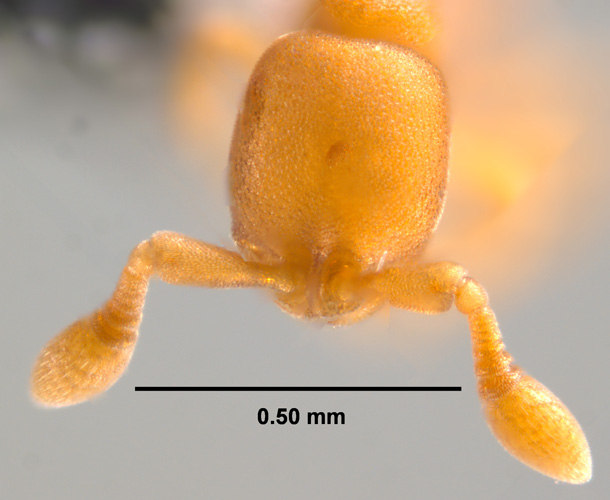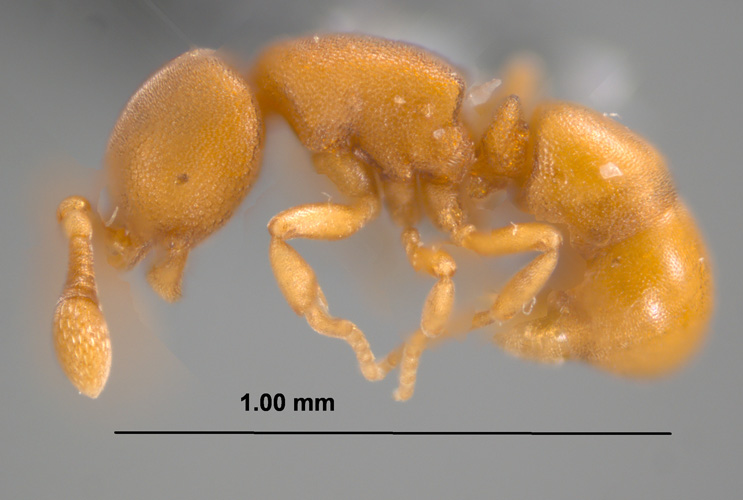|
Subfamily PROCERATIINAE
Tribe PROCERATIINI Discothyrea testacea Roger |
Discothyrea testacea, frontal view of the head of a worker. Notice the large single segmented antennal club (click image to enlarge). |
Discothyrea testacea, side view of a worker (click image to enlarge). |
Discothyrea testacea, side view of an alate male (click image to enlarge). |
|
Discothyrea testacea are minute ants that are not much over 1 mm in overall length. They have small mandibles with a single tooth at the tip. The clypeus extends forward forming a shelf that overhangs the mandibles. The frontal carinae are fused into a single vertical plate, and consequently, the antennal insertions are visible. The antenna has nine segments (occasionally the antennal segments are fused and thus appearing to be less than nine) that terminates apically with a much enlarged antennal club, and the scape is also enlarged apically (see photo of frontal view of head above). The eye is extremely small and sometimes not visible. Dorsal sutures are indistinct or absent on the alitrunk. The gaster is strongly curved under the body with the apex of the gaster is directed forward. The mid and hind tibia are armed with a single spur, and the tarsal claws are simple. Species of this genus are typically found in the tropical to southern temperate regions of the world. These ants are rarely collected due to their minute size and cryptobiotic habits. Workers play dead when disturbed compounding problems in detecting them. They have been collected from leaf litter, humus, and rotten logs. The biology of Discothyrea is poorly known, however, the members of these small colonies are thought to be specialized predators on arthropod eggs. Although Discothyrea testacea was first described in 1863 by Roger, this ant was not collected again until 1948 (Smith, M.R. & Wing, 1955). Discothyrea is not even mentioned in Creighton's "Ants of North America" (Creighton, 1950) or in Smith's "A Generic and Subgeneric Synopsis of the United States Ants, Based on Workers" (Smith, 1947). However, this ant is now collected with much more regularity due to modern litter extraction techniques such as the Berlese funnel and the Winkler sack and is not even considered to be one of the rare ants of southeastern USA. Links |





